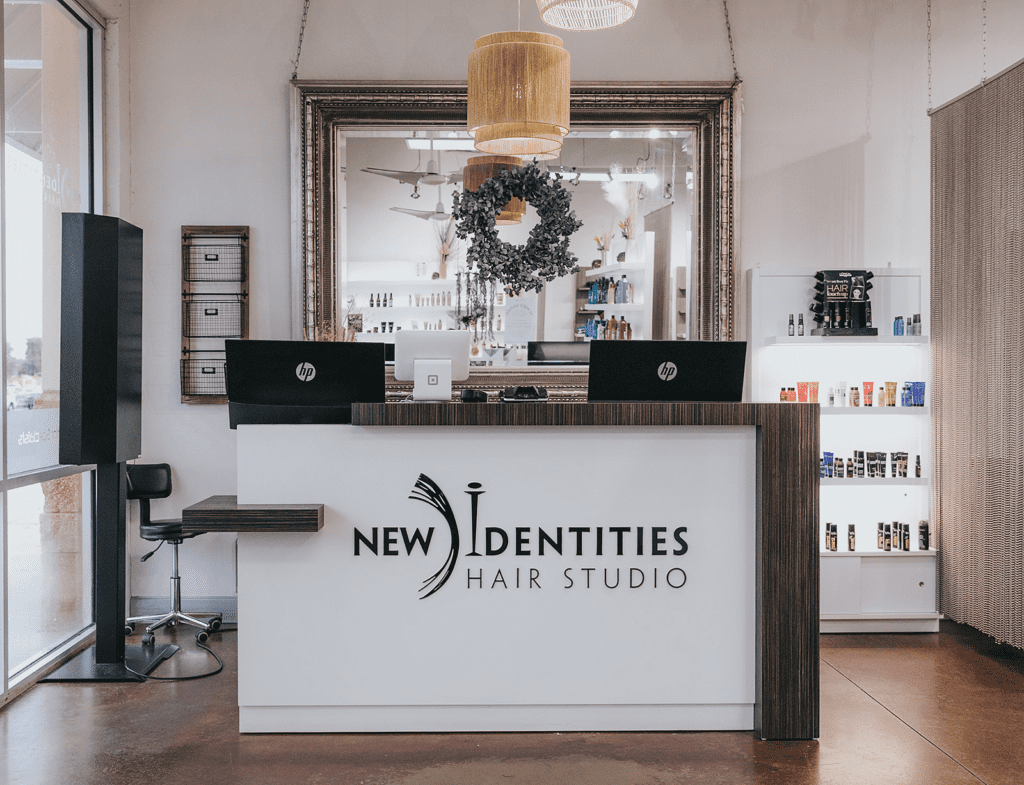Starting a business is exciting, but it can also be stressful. It can be challenging to do things you’ve never done before, from setting up business bank accounts and choosing a business structure to find a physical space and creating a brand.
One of those challenging things will be how to choose a business name.
For some of our clients, a business name idea comes easily. Maybe they’ve had the brand name for years and finally have the opportunity to use it. But for others, choosing the right name can be overwhelming.
And in either case, whether the name comes easily or not, you’ll need to make sure you can use the name practically and legally (the patent and trademark office often comes into play when it comes to brand names).
If you’re in the process of finding a brand name (or trade name, which is a DBA), keep reading for a few ideas on how to get started.
Tips for Choosing a Business Name
There are many ways to go when it comes to a business name. You may want to use a family name or something representing your business.

Not sure where to start? You can find a company name generator online, like this one, to help give you ideas for potential names.
What is a business name generator?
It’s a simple tool that provides inspiration by helping a business owner with ideas for a business name. To start with a business name generator, you may enter a few keywords along with your industry.
Next, the business name generator will share ideas for potential business names. What’s the best part about a business name generator? Some will take it a step further, beyond just inspiration, and offer names with a domain available for your website!
Business names are as diverse as the companies themselves, but some general guidelines can help you pick a company name that will work for years to come.
Pick Something Easy to Spell and Pronounce
Let’s start with the basics – the name for your business should be easy to spell and pronounce. That’s because the name of your business may be the first thing customers learn about you. And if those customers don’t know how to spell or pronounce your name, they may have a challenge when they try to find you or share your business services.
Think about it this way. Let’s say your friend mentions a new small business they love. You plan to do a quick internet search later to look it up, but you can’t remember how to spell it. You google a few names, but the site doesn’t come up, so you move along.
New small business owners don’t have a domain and website that shows up at the top search engines even when the customers type the wrong name in the search bar. They’re not Google (who can be found no matter how you misspell the company name)! So it’s essential to make it easy for someone who’s just getting to know you.
Think Broad
What does this mean? It means you don’t want to limit yourself.
Let’s use an example of a startup law firm. This startup provides services exclusively for clients who have been in a car crash and operate in San Francisco. So when they choose a name and build their brand identity, that is all their business focuses on. They call their brand The San Fran Car Crash Attorney.
In some cases, this could be a good strategy. After all, if they attract their target audience, they might have enough potential customers and cases to become a highly niched business entity.
But, on the other hand, let’s say the law firm builds a huge client base that the customers keep asking for additional services, and they’re coming from Los Angeles, Portland, etc. The attorneys in the firm have the expertise and bandwidth to grow, but their name inhibits their growth because they were specific to one service and one area. The brand name, content, and identity are limited.
The best way to avoid this is to list the product and/or services you plan to have today. And then build a five-year or ten-year vision that includes a menu of options that you may grow into. You won’t always be able to know exactly how you will evolve, but it can be helpful to keep an open mind so you can avoid limiting yourself. You should also avoid specific cities or potentially even states in your name.
Another good example of this is Nike. Nike was made to be a shoe company, plain and simple. They could have easily called their business The Shoe Company, and in the early years of the venture, that would have been accurate. But when you think about keywords that represent Nike today, it’s much broader.
A Nike store is filled with options – from shoes to gear to clothing. They still have a bold impact (supporting athletics), but the options have dramatically changed.
One more thing to note about Nike. We could argue that their business name wasn’t easy to spell. Of course, we know the business well today, but it started as Blue Ribbon Sports (each word of that name would be easily recognized). And when it switched to Nike early on, it was well before the internet (and finding new businesses online).
Avoid What’s Trendy
When choosing a business name, avoid what’s trendy. Popular phrases and taglines today can be words that fall flat tomorrow. An example of this includes things like boss babe, which was popular among female entrepreneurs briefly and now can be interpreted as little better than an insult by some.
While you can’t always know what topics, phrases, and words are going to be popular in the future, it’s best to stay away from pop culture options that are here today and gone tomorrow.
What’s Next After Choosing a Business Name?
Whether you had a name for your business picked out long before you got started or used a name generator, there are a few important next steps.
Double Check The Name Isn’t Taken
Business names can be competitive, and one of the worst things a new business owner can experience is investing in a brand and website, or even prominent signage, only to find out that the name has been taken.
It may seem obvious, but starting with this step can avoid headaches for your business later on. This is also why you may want to keep a couple of options on the list as you name your business just in case one or more are taken.
Search Google
One simple way to check for business names is to start on Google. Look for the domain name for your business and see if another company has it. You can also search for businesses in your area with the same name. If it looks like the name you want is already taken – either as a domain name or store name, you may want to consider your next choice.
Perform A Trademark Search
If you plan to register your business name, you’ll want to perform a Federal trademark search. You also should complete this step to ensure you don’t create a business name that has already been trademarked.
What Is A Trademark?
Getting trademarked protects a unique name and things like your logo or symbols that represent your products or brand. Start your search at https://www.uspto.gov/trademarks/search.
Do a Secretary of State Search
Visit your local Secretary of State site to review state records that may impact your ability to secure and use your desired business name. Each state has different guidelines for business names and legal filings, so always check with your specific rules before starting your business.
What To Do When You Pick Your Business Name
Hurray – you’ve picked your business name and are ready to build your business! Now it’s time to complete the steps to help you grow, whether you plan to use word-of-mouth referrals or a targeted, robust marketing campaign.
Register The Domain
Your domain name is the online business website address for your store or business. Ours is www.themmcagency.com. And just like names, domains are difficult to choose because many domain names are no longer available.
Ideally, you want your website name to be the exact match of your business name. But when not possible, choose something as close as possible. For example, if we couldn’t have selected www.themmcagency.com, we might have tried “themmc” or “mmcagency.”
If you’re having trouble finding the best domain, use some of the auto-generated suggestions from places like domains.google.
Create Social Media Accounts
After the domain is secured, venture to social media and do the same. Or, better yet, check them both simultaneously to ensure you have the best possible options for your name of choice.
Even if you’re not ready to start posting, by securing the names, you can start to build consistency for your brand that you’ll be thankful for later.
Build Your Logo & Brand Guide
We’ve covered a lot of tips for starting your business. And at this step, you can begin to see all your work pay off. Once your name is in place, it’s time to start creating the visual brand and identity with logos and other design objects to attract your target audience and help you stand out from competitors.
Build Your Brand with The MMC Agency
At The MMC Agency, we help business owners build an authentic, unique, and attractive brand for their ideal client.
We know that great branding, just like great products and service offerings, can be a critical part of success which is why we focus on delivering exceptional, complete brands for every client. Each brand package includes logos, typography, color palettes, usage guidelines, images, inspiration, marketing templates, business card, and more.
The MMC Agency Difference
Our process includes a high level of customer service that focuses on delivering a stress-free experience for our clients. We know that you’re busy doing everything you need to start your business, so we’ve built a process that is unlike our competitors.
We build our experience around you – to ensure you get the attention, personalization, and assets you need to create a successful business.
Practically, we assign each client a project manager so they have direct contact with their go-to agency resource. And we don’t require ongoing contracts that tie you down. Our clients always have full ownership of their accounts, website, and brand assets.
Want to learn more about why we’re an award-winning agency and go-to branding expert? Click here to book a free consultation.
